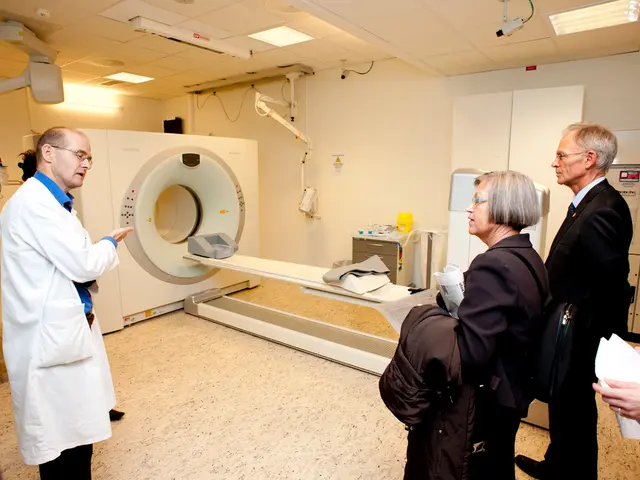Therapy method aimed at reducing unwanted behaviors or attractions, illustrated with case studies and generating debates due to ethical concerns and potential harm.
The Bitter Pill of Change:
Tackling Addictions with Aversion Therapy
What's the point of Aversion Therapy?
Aversion Therapy (AT) makes an unwanted behavior or habit unbearable by pairing it with a disagreeable experience, with the ultimate goal of abolishing the said behavior.
What behaviors can Aversion Therapy handle?
A few examples of behaviors that could potentially benefit from AT are:
- nail-biting
- tobacco addiction
- alcohol use disorder (AUD)
- gambling addiction
Examples of Aversion Therapy
Let's dive into some practical examples:
Emetic Counter Conditioning (ECC)
ECC is a type of AT designed to curb alcohol cravings for people with AUD. Over several ECC sessions, an individual consumes alcoholic beverages while taking a medication that induces nausea and vomiting. The goal? To learn to associate alcohol with feelings of discomfort and sickness.
Graphic Warning Labels
We see warning labels on cigarette packages in 118 countries, featuring disturbing images of potential health complications. These labels, while hardly comforting, serve as a subtle warning, painting smoking in an unpleasant light.
Rapid Smoking
Puffing a cigarette every few seconds? Sounds brutal, hence the name. The objective is to create intolerable sensations that deter the smoker from lighting up again. However, a 2016 review suggests that rapid smoking is not a long-term solution for quitting smoking.
Rubber Band Aversion Therapy (RBAT)
RBAT is a therapy used to treat Obsessive Compulsive Disorder (OCD). A person wearing a rubber band snaps it against their wrist whenever they start to obsess over a thought. The hope is that the irritation caused by the rubber band will create an association between their obsession and discomfort, gradually reducing their obsessive thoughts.
But does Aversion Therapy actually work?
Research indicates that AT can reduce addictive behaviors in the short term. For instance, a 2017 study showed that ECC led to alcohol aversion or avoidance in participants for up to a year afterward. However, the long-term success of AT for other addiction-related behaviors remains unproven.
Controversy surrounding Aversion Therapy
Some mental health professionals argue that AT is unethical because it involves the use of punishment or unpleasant stimuli. The history of Aversion Therapy is marred by its use in conversion therapy, which aimed to change a person's sexual orientation, a practice now widely regarded as harmful and unethical.
FAQs
The success rate of AT varies depending on the addiction being treated. Reliable success rates aren't readily available. However, a 2016 review notes that AT is not deemed effective as a long-term treatment for nicotine addiction or overeating.
The side effects of AT vary based on the type. Potential side effects include pain, discomfort, nausea, fear, and anxiety.
Summing it up
Aversion Therapy is a treatment method that links an undesirable behavior with an unpleasant experience. Though some success has been reported, especially in the short term for alcohol use disorder, the long-term efficiency of AT is debated. Mental health professionals often view it as unethical due to its use of punishment and induction of discomfort.
It's worth noting that alternative treatments like Cognitive-Behavioral Therapy (CBT) and mutual-help groups such as Alcoholics Anonymous (AA) have a more consistent track record of long-term success and are generally considered more ethical and effective for treating substance use disorders.
- Aversion Therapy (AT) is a treatment method in psychology that aims to abolish unwanted behaviors, such as alcohol use disorder (AUD) and gambling addiction, by pairing them with disagreeable experiences.
- Emetic Counter Conditioning (ECC), a type of AT, is used to curb alcohol cravings for people with AUD, by making them associates alcohol with feelings of discomfort and sickness.
- Graphic warning labels on cigarette packages, used in 118 countries, serve as a subtle warning to discourage smoking by painting the habit in an unpleasant light.
- Rapid Smoking, though controversial, aims to deter smoking by making the act intolerable through puffing a cigarette every few seconds.
- The success rate of Aversion Therapy varies and depends on the addiction being treated, with some studies showing short-term success, like the 2017 study that showed ECC led to alcohol aversion or avoidance for up to a year.
- The use of Aversion Therapy in conversion therapy, a practice aimed to change a person's sexual orientation, is widely considered harmful and unethical.
- In the field of health-and-wellness and mental-health, alternative therapies like Cognitive-Behavioral Therapy (CBT) and mutual-help groups such as Alcoholics Anonymous (AA) are generally considered more ethical and effective for treating substance use disorders.




